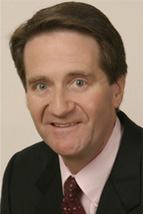An FTM surgery is generally divided into three main categories – chest reconstruction surgery, oophorectomy and hysterectomy, and genital reconstruction procedures. Let us take a deeper look at chest reconstruction.
Chest Reconstruction Surgery
Chest surgery is designed to create a properly contoured male chest. The two procedures that are performed to accomplish the goal are bilateral mastectomy and peri-areolar/keyhole incision. There are a number of surgical variants of these two procedures, including the pie-wedge technique and the inverted T incision.
For instance, the inverted T incision is very similar to the double incision, the only difference being that the incisions run from the nipple to the pectoral area. The resultant post-surgical mark looks a lot like an anchor. The pie wedge technique employs a curved incision that runs from the areolar edge all the way towards the underarm.
The surgical method used will depend on your body type as well as the preferences/skills of the surgeon. Guys who have larger chests are better off with the double incision technique, while guys with small chests can go for the peri-areolar/keyhole procedure.
Preparing for the Procedure
Two important factors that need to be considered before you choose to undergo a chest reconstruction procedure are body weight and smoking habits. Smoking interferes with the body’s ability to heal itself. It is recommended that you stop smoking for at least four weeks before and after the surgery.
Your body weight also plays a role in your compatibility. Being overweight, that does not prevent you from undergoing surgery, but the results of the chest reconstruction will improve dramatically if you are at the optimal body weight during the procedure. This will allow your surgeon to contour the chest more proportionately, thereby decreasing the chances of any difficulties during the procedure.
Being in good physical health is a critical component of eligibility. Your surgeon will go over your medical history and analyze your body to determine if you’re suited. You will also be required to stop taking aspirin and other anti-inflammatories at least a week before the surgery as they can cause excessive bleeding and cause problems during the procedure.
There are certain supplements and vitamins that can help you with the healing process. You can ask your surgeon to prescribe a nutritional regimen that can help speed up the recovery process.
Post-Surgical Marks
Although there is a risk of post-surgical marks with almost every surgery, they can be greatly minimized if your surgeon is skilled and has enough experience with the procedure. Make sure that your surgeon is board-certified before making your final decision.
During the healing process, collagen will accumulate at the surgical site for the first few weeks after the surgery. This creates darkened surgical marks, but these will fade away with time. If you feel like you have an area with excessive surgical marks, you can talk to your surgeon about a revision during your follow-up.
The procedure is performed on an outpatient basis, so you will be advised to make arrangements with a close friend or family member to drive you home.
Contact Our Office
As a board-certified plastic surgeon with over 25 years of experience, Dr. Richard Bartlett has proven himself to be one of Boston’s most trusted doctors. Through unmatched skill and experience, he will help you achieve the results you desire. Contact us to schedule your consultation today.


 Recognized as one of “Boston’s Most Trusted Doctors” by Boston magazine, Richard A. Bartlett, M.D. is a board certified plastic surgeon in practice for over 30 years Dr. Bartlett is considered a “doctor’s doctor,” and is a favorite choice of New England medical professionals when referring family and friends for cosmetic and reconstructive plastic surgery in Boston, Massachusetts.
Recognized as one of “Boston’s Most Trusted Doctors” by Boston magazine, Richard A. Bartlett, M.D. is a board certified plastic surgeon in practice for over 30 years Dr. Bartlett is considered a “doctor’s doctor,” and is a favorite choice of New England medical professionals when referring family and friends for cosmetic and reconstructive plastic surgery in Boston, Massachusetts.

